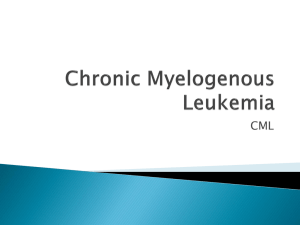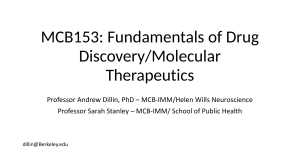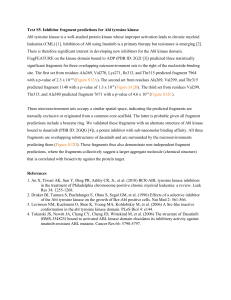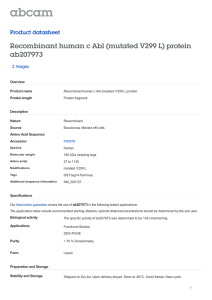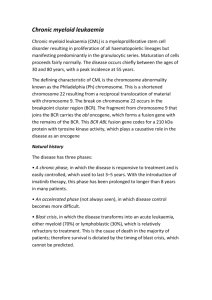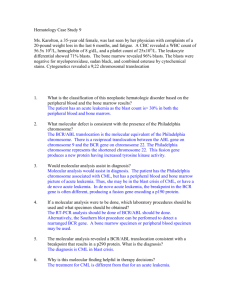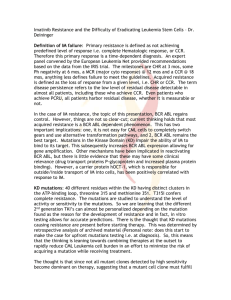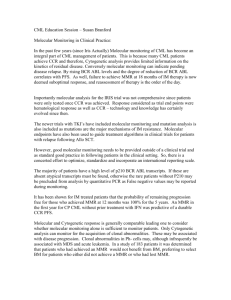advertisement
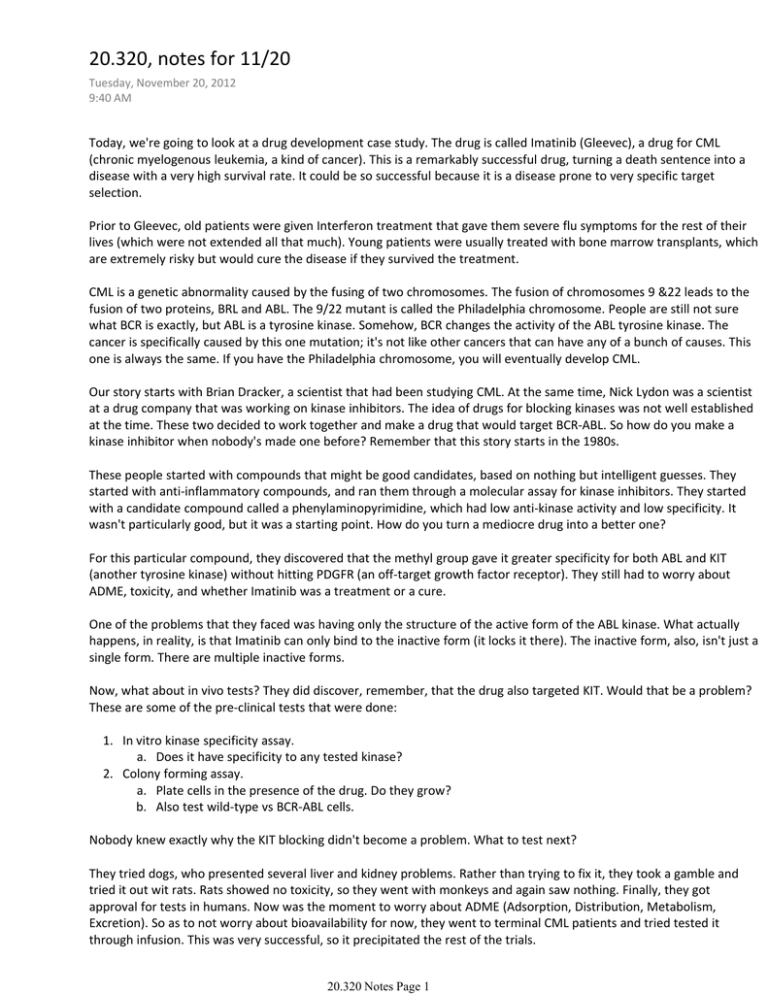
20.320, notes for 11/20 Tuesday, November 20, 2012 9:40 AM Today, we're going to look at a drug development case study. The drug is called Imatinib (Gleevec), a drug for CML (chronic myelogenous leukemia, a kind of cancer). This is a remarkably successful drug, turning a death sentence into a disease with a very high survival rate. It could be so successful because it is a disease prone to very specific target selection. Prior to Gleevec, old patients were given Interferon treatment that gave them severe flu symptoms for the rest of their lives (which were not extended all that much). Young patients were usually treated with bone marrow transplants, which are extremely risky but would cure the disease if they survived the treatment. CML is a genetic abnormality caused by the fusing of two chromosomes. The fusion of chromosomes 9 &22 leads to the fusion of two proteins, BRL and ABL. The 9/22 mutant is called the Philadelphia chromosome. People are still not sure what BCR is exactly, but ABL is a tyrosine kinase. Somehow, BCR changes the activity of the ABL tyrosine kinase. The cancer is specifically caused by this one mutation; it's not like other cancers that can have any of a bunch of causes. This one is always the same. If you have the Philadelphia chromosome, you will eventually develop CML. Our story starts with Brian Dracker, a scientist that had been studying CML. At the same time, Nick Lydon was a scientist at a drug company that was working on kinase inhibitors. The idea of drugs for blocking kinases was not well established at the time. These two decided to work together and make a drug that would target BCR‐ABL. So how do you make a kinase inhibitor when nobody's made one before? Remember that this story starts in the 1980s. These people started with compounds that might be good candidates, based on nothing but intelligent guesses. They started with anti‐inflammatory compounds, and ran them through a molecular assay for kinase inhibitors. They started with a candidate compound called a phenylaminopyrimidine, which had low anti‐kinase activity and low specificity. It wasn't particularly good, but it was a starting point. How do you turn a mediocre drug into a better one? For this particular compound, they discovered that the methyl group gave it greater specificity for both ABL and KIT (another tyrosine kinase) without hitting PDGFR (an off‐target growth factor receptor). They still had to worry about ADME, toxicity, and whether Imatinib was a treatment or a cure. One of the problems that they faced was having only the structure of the active form of the ABL kinase. What actually happens, in reality, is that Imatinib can only bind to the inactive form (it locks it there). The inactive form, also, isn't just a single form. There are multiple inactive forms. Now, what about in vivo tests? They did discover, remember, that the drug also targeted KIT. Would that be a problem? These are some of the pre‐clinical tests that were done: 1. In vitro kinase specificity assay. a. Does it have specificity to any tested kinase? 2. Colony forming assay. a. Plate cells in the presence of the drug. Do they grow? b. Also test wild‐type vs BCR‐ABL cells. Nobody knew exactly why the KIT blocking didn't become a problem. What to test next? They tried dogs, who presented several liver and kidney problems. Rather than trying to fix it, they took a gamble and tried it out wit rats. Rats showed no toxicity, so they went with monkeys and again saw nothing. Finally, they got approval for tests in humans. Now was the moment to worry about ADME (Adsorption, Distribution, Metabolism, Excretion). So as to not worry about bioavailability for now, they went to terminal CML patients and tried tested it through infusion. This was very successful, so it precipitated the rest of the trials. 20.320 Notes Page 1 We should mention, btw, the way that clinical trials work. One of the first things to be done is a dose escalation, where you give healthy subjects more and more drug while looking for side effects. They saw no toxicity even at obscene dosage levels, so they went ahead with other tests. They used qPCR to measure the level of BCR‐ABL with respect to ABL (to get a normalized measurement), and tracked patients this way. In people under the treatment, the level of BCR‐ABL transcript went down to noise levels for a long, long time. This is not a cure, though. Even four years after the fact, when people stopped taking the drug the level of BCR‐ABL transcript would rise to levels even higher than they had at first. Some of these cancers also developed resistance to Imatinib. All things considered, though, this has been the most successful story in its kind of drug design. Compartmentalization model Let's talk about drug development, by looking at a kind of stem cell called the hematopoetic stem cell. 20.320 Notes Page 2 20.320 Notes Page 3 MIT OpenCourseWare http://ocw.mit.edu 20.320 Analysis of Biomolecular and Cellular Systems Fall 2012 For information about citing these materials or our Terms of Use, visit: http://ocw.mit.edu/terms.

